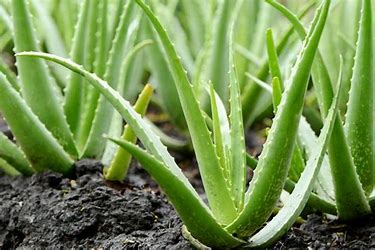

Poultry farming has rapidly grown in the country and across the world, with thousands of people keeping birds for commercial purposes.
However, as the venture grows, consumer tastes are changing, with many now going for indigenous chicken reared on free-range. The birds kept under free-range are mainly fed on natural vegetation, grains (mixture of sorghum, sunflower seeds, crushed maize and millet), and kitchen leftover.
Therefore, the argument is that such birds have less antibiotic residues. It is, therefore, important that farmers know, in particular, some plants that can be used to treat chicken diseases.
These are pepper, aloe vera, sisal leaves, neem, papaya (papain), cinnamon, garlic (allicin), thyme and Oregon.
Diseases and parasites controlled by natural herbs are:
Parasites
They can be grouped into endoparasites (internal) and ectoparasites (external) like tampans, lice, mites, fleas, ticks and worms. Ectoparasites are associated with scratching and scales on the legs while endoparasites are associated with worms in dropping, redness of the stool, greenish diarrhoea and mouth discharge.
Chemically, ectoparasites are controlled using carbaryl (sevin), ectomin and cooking oil, paraffin oil, engine oil. The oils are applied on the parasites to suffocate them.
Organically, farmers use the following herbs in the control of internal parasites. Worms are controlled using aloe vera, sorghum powder and pepper. Tobacco (Nicotiana tabacum), Solanaceae (night shade), and Erythrina abyssinica (a multi-purpose tree) extracts are commonly used by local farmers in control of helminthiasis (worm infection).
The above extracts in salt solution controls gape worm which causes pneumonia, gasping and suffocation in chicks.
In addition to the above herbs, tapeworms can also be controlled using the following herbs; Cannabis sativa, Clerodendrum rotundifolium and Citrus aurantifolia juice mixed with potash and Vernonia amygdalina.
Other herbs that have also been used in the control of intestinal tapeworm and roundworms include ground pumpkin and courgette seeds, ground garlic (allicin) in drinking water or 20 per cent pawpaw latex (papain) solution.
Aloe spp (burnt in sleeping area or used as wood ash, Mexican marigold (Tagetes minuta) and Tephrosia vogelia are used as insect repellants in poultry houses.
Biologically, lesser mealworms and predatory mites can be used to control mites, lice and fleas.
However, herbs have not been proved to completely clear all the parasite in the flock but have the ability to control.
Pathogenic micro-organisms:
These are micro-organisms that predispose the birds to diseases. Micro-organisms of importance in poultry farming include Salmonella typhi, Staphylococcus aureus and Escherichia coli. Aloe spp neem (Azandrachta indica) is the common herb used in the control of the above micro-organisms. Oregon inhibits growth of Salmonella while allicin in garlic inhibits the growth of E.coli. Oregon can be used in the control of Salmonella and E.coli while hops inhibits Clostridium.
New castle disease
It is a viral disease which spreads rapidly in the flock. It is spread through body contact, contact of infected birds with drinkers, feeders, feeds and water. This disease affects the respiratory, nervous (convulsion, tremor and paralysis) and digestive systems of the birds.
The disease is characterised by wing dropping, sneezing, reduced appetite, difficulty in breathing, nasal and eye discharge, greenish diarrhoea, dirty feathers, body weakness and production of thin shelled eggs in hens. It is more prevalent during the rainy season.
Organic control
Use of concoctions of capsicum annum fruits, Amaranthus hybridicus var cruentus (fruits and flowers) and Aloe secundiflora leaves. The mixture is crushed, soaked in water for six hours and given as drinking water or given two table spoonful twice a day. Sometimes Capsicum annum (pili pili hoho) is mixed with wood ash and water.
Another herb for Newcastle disease control includes neem (mwarobaini). To control the disease in nine birds, a concoction of a litre of water, a leaf of Aloe vera, and eight seeds of red pepper can be used for three days.
Coccidiosis:
It’s a protozoan disease transmitted to birds through water contamination, feeds and droppings. It is characterised by bloody diarrhoea, drooping wings, loss of appetite and weight loss. Organically, farmers have controlled coccidiosis using Amaranthus, spinach, vernonia amygdalina, some essential oils, garlic, Lagenaria vulgaris fruits, Cassia spp and Aloe vera.
Salmonellosis:
It is a bacterial disease transmitted through feeds, water and equipment contaminated by droppings. Poor hygiene promotes rapid spread of this disease. It is characterised by diarrhoea, difficulty in breathing, loss of appetite and fever. Farmers can also use a concoction of capsicum annum and ash solutions in controlling this disease.
Respiratory and gastrointestinal diseases
Sisal leaves are used to control gastrointestinal diseases which are characterised by diarrhoea, un-thriftiness and wing drooping while respiratory diseases characterised by coughing, gasping and noisy breathing.
They are controlled by Colocasia esculantum (taro) tuber and pepper. Infectious bronchitis is controlled by Solanum aculeastrrum and Canabis sativa.
Fowl pox:
A concoction of two parts of Microglossa pyriflora roots, 1 part of Agave sisalana leaves and 1 part of Aloe vera leaves boiled for 30-45 minutes and given to infected birds as drinking water or a mixture of ash and Capsicum annum clears the disease. Smear the wound with Elaeis guineensis oil.
However, of all the herbs, aloe vera stands out as the king of herbs or a broad spectrum antibiotic in poultry health. This plant is composed of polysaccharides such as pectin, hemicellulose, glucomannans and acetylated mannans. These components are responsible for immune boosting in birds.
The herb is used as a brood spectrum in curing and preventing wounds, skin irritation and inflammation, burns and bruises.
Glycoprotein is responsible for anti-inflammatory and antiallergenic properties of aloe vera. Therefore, if controlled use of herbs in specified dose can be established, we can move away from antibiotics which cause
 Contact Jaguza Support
Contact Jaguza Support